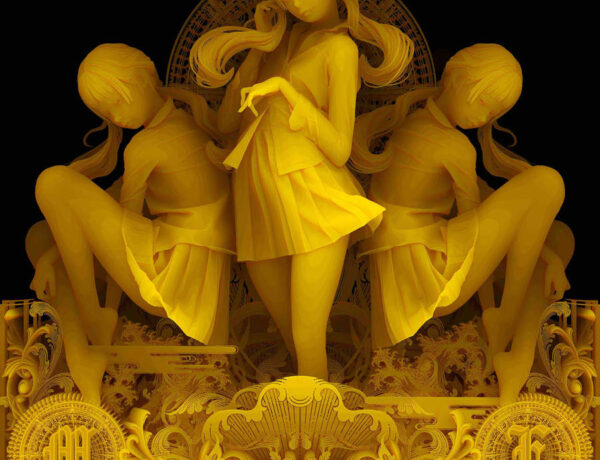Cinthia James is a dedicated artist who effortlessly hops between portraiture, illustration and graphic design. Drawing inspiration from music, especially K-pop, and fashion, her various works are linked by her originals applications of surface pattern design, bringing an unusual vibrancy to what one might typically expect from her subjects.
Cinthia James has examined her own artistic journey with such keen scrutiny and self-awareness, that she has stretched beyond her realms as an artist to write her book “Treasure Found: An Art Journey”, which provides the advice she wishes she’d had when developing her craft.
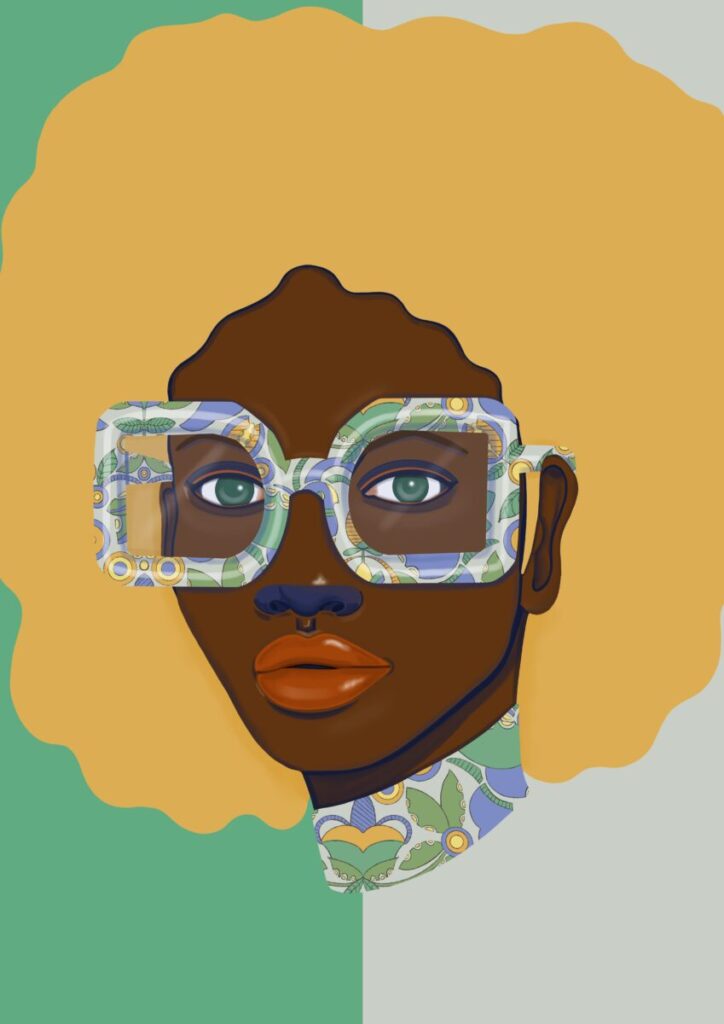
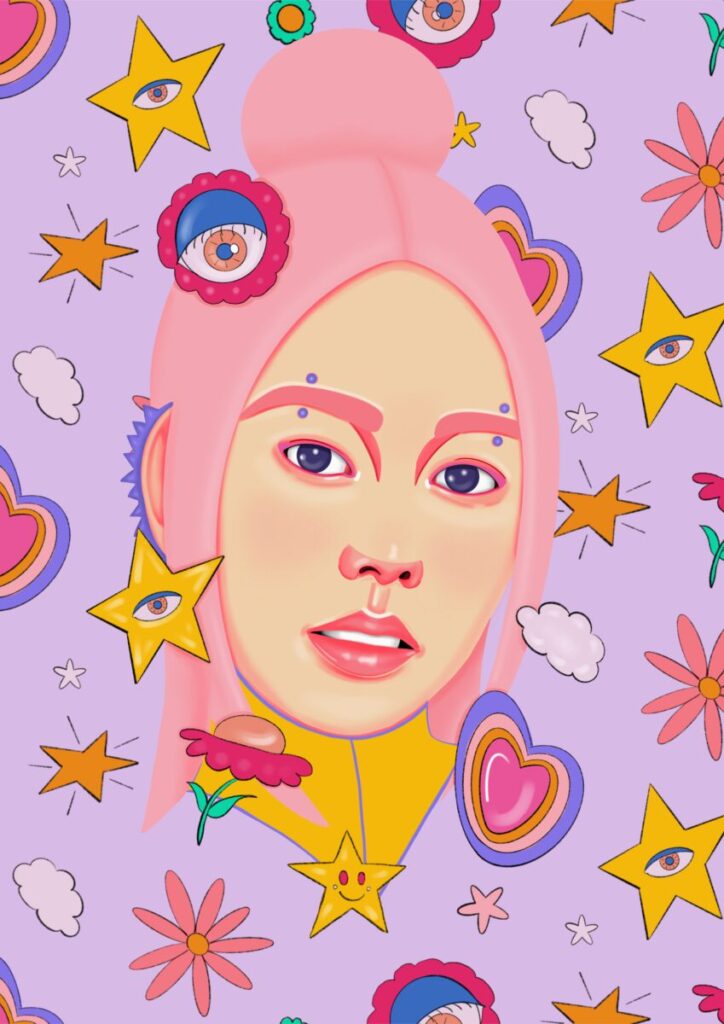
I’m constantly inspired by how much my work changes when I add a pattern—it becomes a completely different piece. For me, using patterns is like how other artists might use texture. It’s always a question of, “What pattern can I add here?”
Exclusive Interview with Cinthia James
You draw a lot of pattern design in all of your work, including portraits. What is it about surface patterns that inspires you?
As a child, my grandparents’ home was full of patterns, and my mom’s house had a lot of them too. I think that’s where some of my influence comes from. I’m drawn to the repetition of patterns—I love when motifs and elements repeat smoothly. Adding a pattern to a simple portrait can elevate it, turning color blocking or other elements into something more dynamic. Patterns can create a mood or make a statement, depending on what you choose.
I’m constantly inspired by how much my work changes when I add a pattern—it becomes a completely different piece. For me, using patterns is like how other artists might use texture. It’s always a question of, “What pattern can I add here?” The few works I’ve created without any patterns tend to stand out because of it.
How did you connect your love of fashion and music to your love of design and illustration?
I’ve always been drawn to visual art and fashion, and music videos can be an extension of that. I love how stories and emotions can be created with silhouettes, prints, and style choices. Music videos, especially those tied to a conceptual idea of a song, really bring that visual element to life. There are songs I didn’t connect with at first, but when I saw the video or a live performance, they just clicked for me. That visual connection made me appreciate the music more.
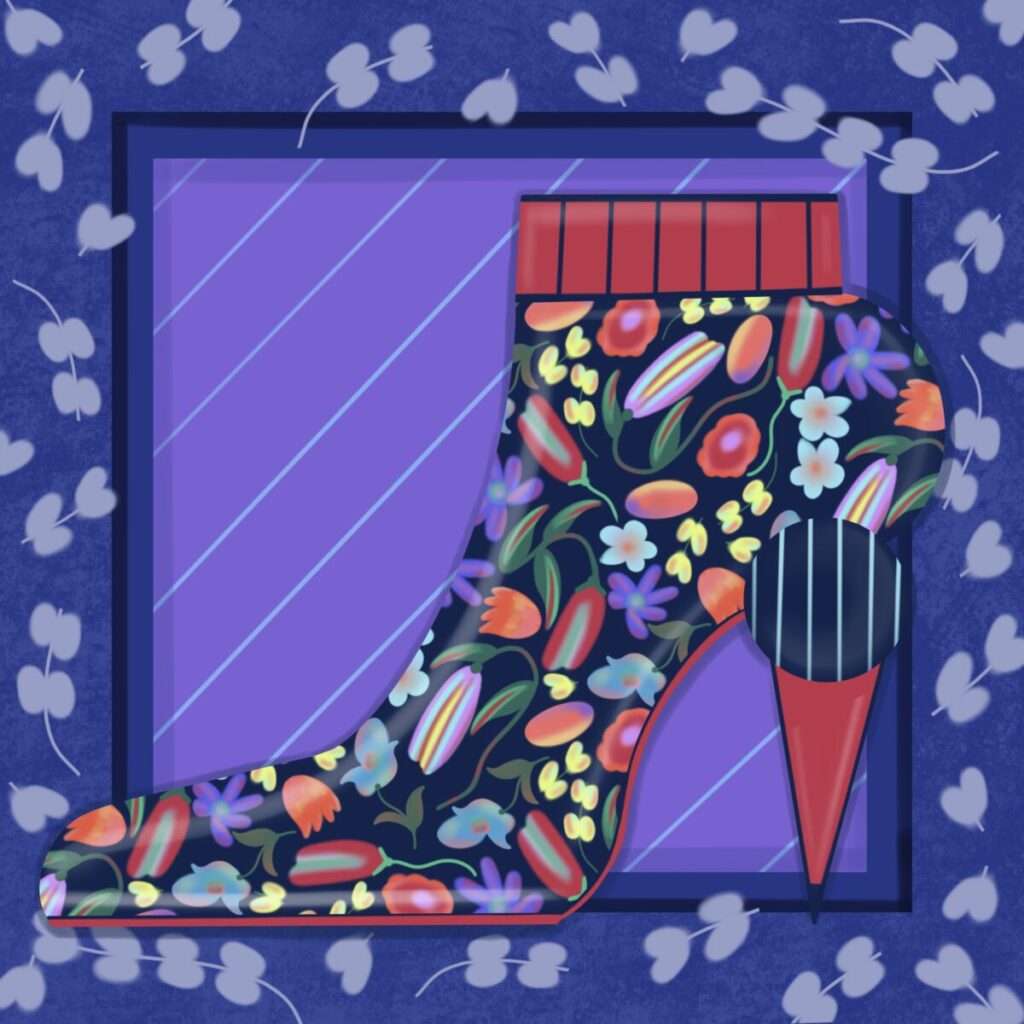
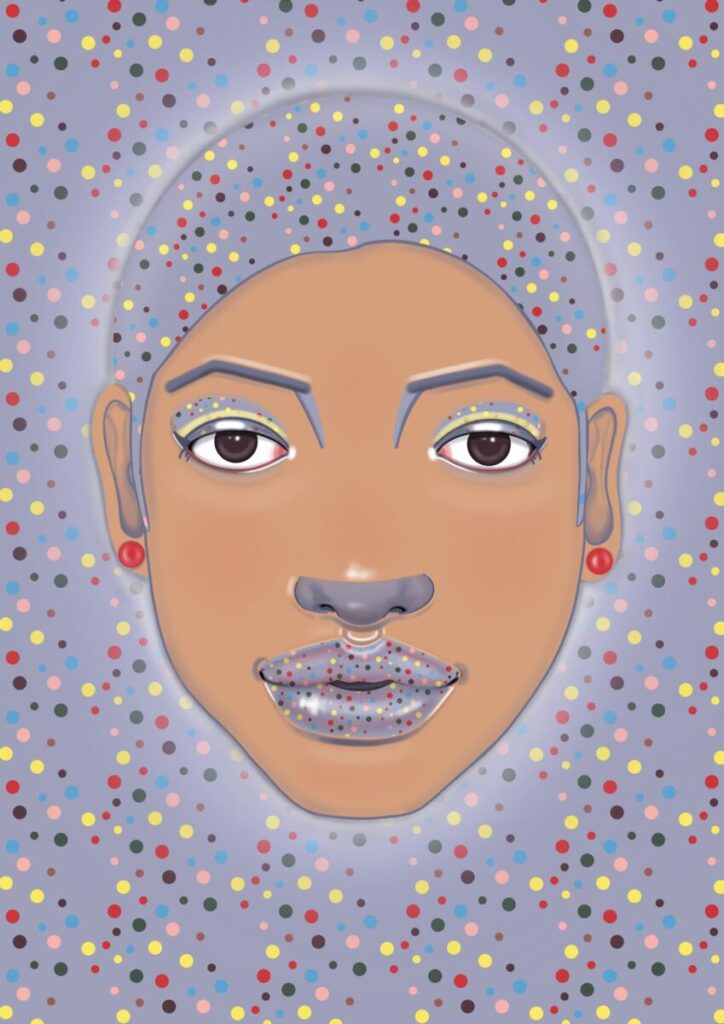
The advice in the book comes from what I learned along the way and what I wish I’d known when I was starting out.
How do you choose your subjects for your wide range of portraits?
I often approach my portraits by thinking about what pattern would work best for the piece. Since I work with a lot of colors, I try to be mindful of skin tones and which patterns complement them. Sometimes it’s the face, an accessory, or a hairstyle that inspires the direction of a portrait. While I occasionally draw likenesses, most of my portraits are characters I create—characters who seem to naturally fit with the patterns I want to use.
Your book, “Treasure Found: An Art Journey”, offers guidelines for creating a regular artistic practice. How did you develop the advice in the book? Is it advice you’ve received, learned, or wished you’d known when you started your creative journey?
The advice in the book comes from what I learned along the way and what I wish I’d known when I was starting out. I studied graphic design in art school, but after I graduated, I felt lost. I didn’t see myself as a designer because I wanted to draw more, but I also didn’t want to go back to school immediately. I was exhausted, and I wasn’t sure what direction to take.
Some of the foundations for a regular artistic practice came from what I learned in school, and I cover that in my first chapter. But a lot of what’s in the book came from trial and error—figuring out what I did and didn’t want to do. I wanted to draw portraits and patterns, but I didn’t have the skills yet, and I brushed it off as something I wasn’t talented enough for. Eventually, I realized it was the one thing I truly wanted to do creatively, and I set out on a journey to figure out how to make it happen.
Of course, the first step was to take courses on portraits and patterns. But once the courses ended, I was stuck again—wondering, “What now? How do I move forward?” That’s when I started setting goals for myself, which eventually evolved into the process I share in my book. It’s a way to experiment, break through art block, and build a consistent practice that helps you grow and fill your portfolio.
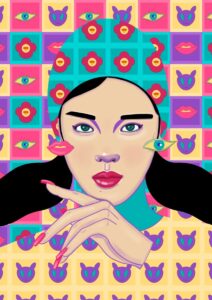
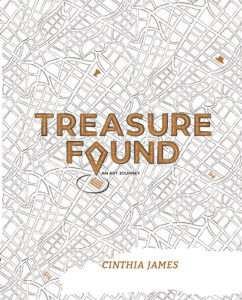
You’re often inspired by music when you design and draw. Can you recall any particular bands or musicians that inspired you to try new artistic styles during your career?
The group that has inspired me the most as an artist is the K-pop group ATEEZ. I even wrote about them in my book, and thanked them at the end. They’re probably the only group I can point to as a direct influence—everything else has been more trend-based or individual songs and lyrics that sparked something in me. But with ATEEZ, it’s different. Their entire artistic concept really resonates with me. It feels like a whole collective of artists is behind their work.
Their core identity, especially in the beginning, was as pirates—pirates searching for treasure and rebelling against a tyrannical government. As a sci-fi fan, this was right up my alley, and their music is great too. The blend of their concept, their visual identity, set design, physical album design, and music videos creates such a strong creative narrative. It keeps me coming back to see what they’ll do next.
I guess this is a long way of saying that ATEEZ inspired me to embrace my own creative journey, to find my personal treasure. That’s a big part of why I named my book Treasure Found: An Art Journey. I’m not saying I’m a pirate, but I definitely needed to go on my own journey. No other artist has influenced me in the same way.


